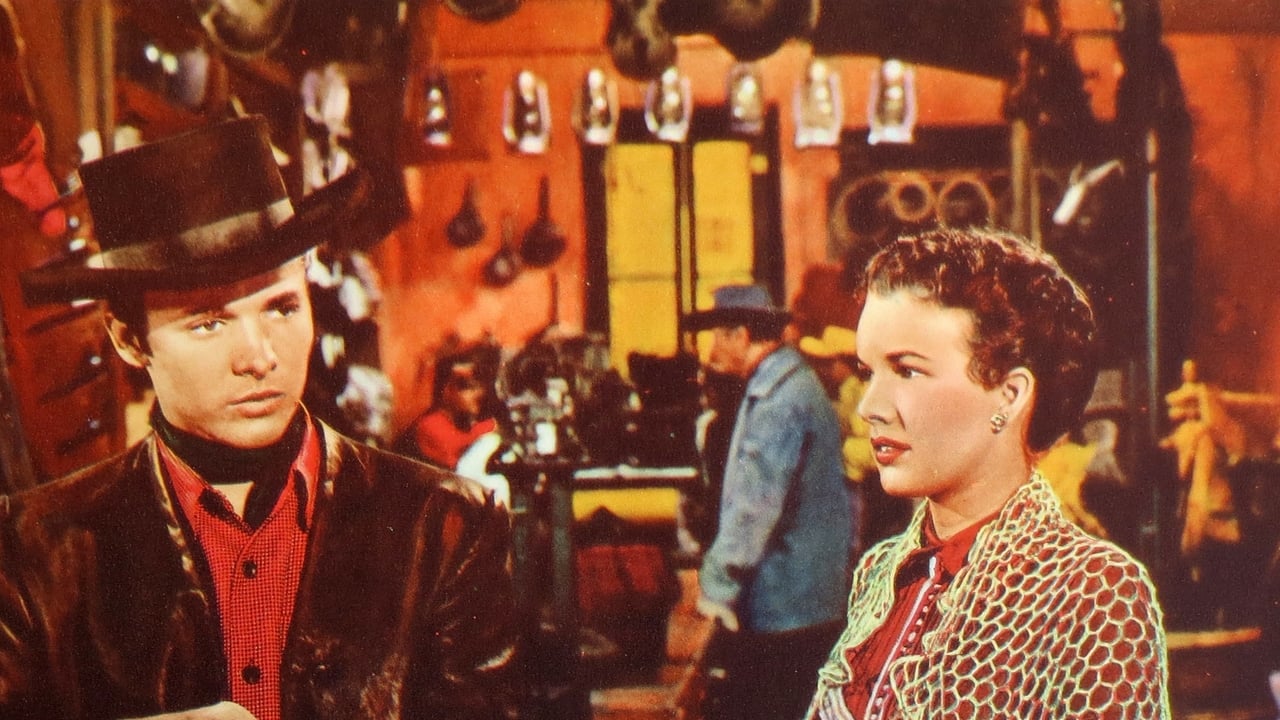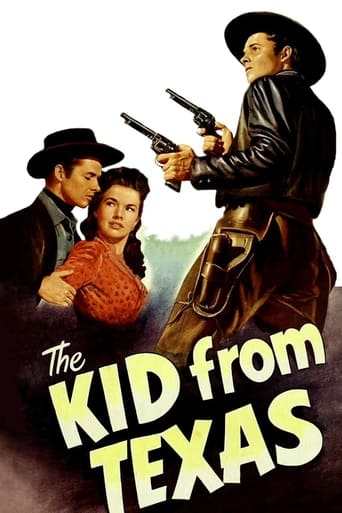

What a beautiful movie!
... View MoreIntense, gripping, stylish and poignant
... View MoreIt's funny watching the elements come together in this complicated scam. On one hand, the set-up isn't quite as complex as it seems, but there's an easy sense of fun in every exchange.
... View Morea film so unique, intoxicating and bizarre that it not only demands another viewing, but is also forgivable as a satirical comedy where the jokes eventually take the back seat.
... View MoreThe Kid from Texas (AKA: Texas Kid, Outlaw) is directed by Kurt Neumann and written by Robert Hardy Andrews and Karl Kamb. It stars Audie Murphy, Gale Storm, Albert Dekker, Shepperd Strudwick and Will Geer. Music is by Milton Schwarzwald and cinematography by Charles Van Enger. 11th July 1879, Lincoln County, and a young man born of the name William Henry McCarty Junior is about to write his name into the annals of infamy... "I'll get every man who had a hand in this killing if it's the last thing I do" It's a "B" feature in production terms and it's a hodge-podge of historical facts, but in the trajectory of Western movies it's a rather important piece. It also happens to be great entertainment for the Western fan. It would be the film to launch Audie Murphy on the road to Western iconography, whilst simultaneously becoming a valid early addition for cinematic representations of the Billy the Kid legend. Historically the core basis of the film is accurate, though the chronology is all over the place. There's also a bizarre decision to use different character names for McSween, Tunstall and Dolan, three of the major players in the Lincoln County War. However, the portrayals of the principal real life people is surprisingly well balanced, there's no attempts at romanticising the issues, no side picking, because both sides are equally driven and culpable for the carnage and misery that would play out during this time in Western history. As an Oater on entertainment terms it delivers wholesale, there's some staid acting, not least from Murphy, who you can see is feeling his way into how he should react in front of a camera. Yet there's a magnetic charm to Murphy that would serve him well in this specialist genre field. It also helps to have a very reliable supporting cast backing him up, be it the wonderfully named Gale Storm's beauty, or Dekker and Geer being acting professionalism personified, there's a lot to enjoy here on the thespian production front. The requisite amount of action is in full effect, as are key moments in the real story that provide some great scenes; such as the infamous jail break, while the colour photography is most pleasant. Ultimately it's a revenge story for the "B" Western loving crowd, where the villains are slippery and the anti-hero a damaged dandy. Sometimes you gotta peer through the gloss to get the facts, but what fun that proves to be. Yee- haw. 7/10
... View MoreAs everyone knows, Audie Murphy was the most highly decorated soldier of World War II, and a most improbable one. Here, a few years after his almost unbelievable exploits in Europe, he still looks like a teenager. He and Universal Studios established a symbiotic relationship. They gave him a splendid pay check in return for allowing himself and his fame to be exploited.He was cast repeatedly in inexpensive Westerns with only a few forays outside the genre, mostly forgettable except for one, John Huston's "Red Badge of Courage", in which he was given a chance to act.In this early film, "The Kid From Texas", he hasn't yet learned his chops. He's handsome in a very young and very boyish way but his expression is that of a department store mannequin. I don't believe he blinks. He's given a taciturn personality for obvious reasons. He was particularly graceless for a warrior. When he walked he hardly swung his arms, and kept his fingers half closed into fists.The story sticks closely to historical fact but not too closely. In the one or two photographs I've seen of Billy the Kid he looks looks like a street urchin from New York who is desperately in need of a tailor and some dental work.But here's how Universal has his decked out here. Gray shirt, black hat, tight trousers, black leather bolero jacket, two guns tied down, a black horse, and a black choker. Not a neckerchief, but a choker, straight out of Toulouse-Lautrec's sketch of Marcel Lender an innumerable other singers and whores of Paris in 1885.I can't even count the number of movies about Billy the Kid, some fictionalized more than others. I think Robert Taylor may have struggled with the role at twice the age of William Bonney. The most artistic effort -- too stylized for my taste but gripping nonetheless -- is Arthur Penn and Paul Newman's "The Left Handed Gun." Billy the Kid lived for a time in Mesilla, New Mexico, about an hour from where I live. You may visit the square at any time and enjoy the delights of the many curio shops and restaurants. I recommend the margaritas at the elegant Double Eagle de Mesilla. Bring your wallet.
... View MoreI have a lot of respect for Audie Murphy, the most decorated US solder of WW II. However I have to admit that what I find most memorable about him are his acting roles, particularly in Westerns. He always played a deceptively young-looking gunfighter and had the real-life moves to back him up on camera. One excellent example is early in the film Duel at Silver Springs where he shoots the gun out of Lee Marvin's hand while sitting at a saloon card table - he was lightning fast on the draw. I like Murphy here as Billy the Kid because he's still young-looking enough to be reasonably convincing. There is another movie called Billy the Kid from 1941 with Robert Taylor in the title role and he doesn't look anything like a kid - shortly after I started watching that one I switched it off. Taylor was over 30 years old and looked possibly even older than that. (On the other hand the opening scenes of To Hell and Back have Murphy at age 31 playing himself as a military inductee of 18, and to me, that also did not work.) Here, Murphy at 25 or so still looks young enough to pull off the role of a "kid".Anyhow, back to this movie, it's one of the versions of Billy the Kid I enjoy watching because Murphy plays his part convincingly. And it has the added bonus of having been shot in Technicolor, making it easy on the eyes too.
... View MoreI had forgotten this movie and how much I enjoyed it back in the 50's. I enjoyed most of Audie Murphy's westerns , but do not have a copy of "The Kid From Texas" (hope to get one soon). The only trouble with some of these movies is that when I see them as an adult, they are not the way I remembered them.
... View More